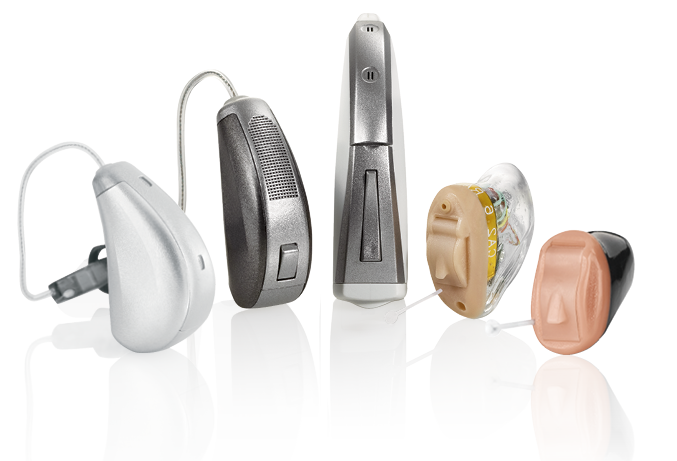
Adjusting to life with hearing aids can be a transformative journey, bringing newfound clarity and connection to the world around you. For many, this journey is filled with mixed emotions – from the excitement of experiencing sounds anew to the challenges of adapting to new routines.
This guide aims to help beginners navigate this transition smoothly.
Understanding the Basics
What Are Hearing Aids?
Hearing aids are small electronic devices that amplify sound to assist those with hearing loss. They consist of a microphone, amplifier, and speaker, working together to capture and enhance sound from your environment.
Types of Hearing Aids
There are several types of hearing aids available, including:
- Behind-the-Ear (BTE): Suitable for most types of hearing loss and offers a comfortable fit.
- In-the-Ear (ITE): Custom-made to fit the outer ear, providing a discreet option.
- Receiver-in-the-Ear (RITE): Combines elements of BTE and ITE for a balanced approach.
- In-the-Canal (ITC): Fits partly in the ear canal, offering a more hidden appearance.
The Initial Adjustment Period
Embrace the Learning Curve
When you first receive your hearing aids, it’s essential to acknowledge that there will be a learning curve. Your brain needs time to re-familiarize itself with sounds it may not have heard clearly for some time.
Start Slowly
Begin by wearing your hearing aids for a few hours each day, gradually increasing the duration as you become more comfortable. This gradual approach helps prevent overwhelming your auditory system.
Follow-Up Appointments
Regular check-ins with your audiologist are crucial during the initial adjustment period. They can fine-tune your hearing aids to ensure optimal performance and address any discomfort or issues you may encounter.
Practical Tips for Everyday Use
Keep Them Clean
Maintaining your hearing aids is vital for their longevity and performance. Clean them regularly with a soft, dry cloth, and avoid exposing them to moisture or extreme temperatures.
Batteries and Charging
Understanding the battery life of your hearing aids and keeping spare batteries on hand can prevent unexpected outages. If you have rechargeable hearing aids, establish a routine for charging them, typically overnight.
Getting Used to New Sounds
Initially, everyday sounds like the hum of a refrigerator or the rustling of paper may seem loud or intrusive. Over time, your brain will adjust, and these sounds will become less noticeable.
Using Assistive Technology
Modern hearing aids often come with Bluetooth connectivity, allowing you to connect them to your smartphone, TV, or other devices. This feature can enhance your listening experience in various settings.
Emotional and Social Adjustment
Communicate Openly
Let your friends, family, and colleagues know that you’re adapting to hearing aids. Open communication can foster understanding and patience, making your adjustment smoother.
Join Support Groups
Connecting with others who use hearing aids can provide valuable support and insights. Hearing aid support groups, both in-person and online, can be excellent resources for advice and encouragement.
Stay Positive
Adapting to hearing aids is a journey that requires patience and persistence. Celebrate the small victories along the way, and remember that the benefits of improved hearing far outweigh the initial challenges.
The Role of SPees in Your Hearing Journey
At SPees, we understand that every individual’s hearing needs are unique. That’s why we offer a wide range of hearing aids, tailored to meet diverse requirements. Our expert audiologists work closely with you to determine the best solution for your hearing loss, lifestyle, and preferences.
Personalized Fittings
Our fitting process ensures that your hearing aids are comfortable and optimized for your specific hearing profile. We take the time to understand your listening environments and preferences, making necessary adjustments to enhance your experience.
Advanced Technology
SPees provides hearing aids equipped with the latest technology, including noise reduction, directional microphones, and Bluetooth connectivity. These features are designed to improve your hearing clarity and overall quality of life.
Ongoing Support
We believe in providing continuous support to our clients. From initial fittings to regular check-ups, our team is dedicated to ensuring that your hearing aids function perfectly. We also offer maintenance tips and troubleshooting assistance to keep your devices in top condition.
Affordable Options
Quality hearing aids shouldn’t be a financial burden. SPees offers a variety of affordable options and payment plans to make hearing aids accessible to everyone. Our team can help you navigate insurance coverage and financing options to find a solution that fits your budget.
Adapting to life with hearing aids is a significant step towards improved hearing and a better quality of life. By embracing the adjustment period, following practical tips, and seeking support, you can make this transition smoother.
Remember, SPees is here to provide the best hearing aids tailored to your needs, ensuring you experience the world of sound with clarity and confidence.

